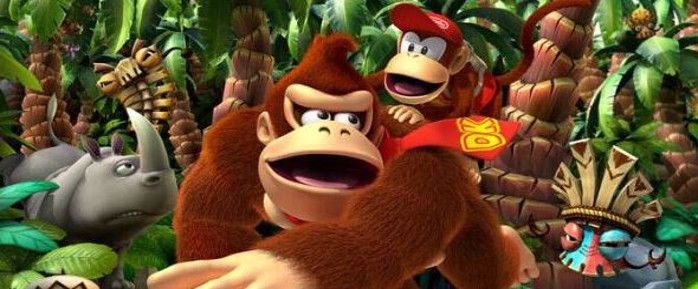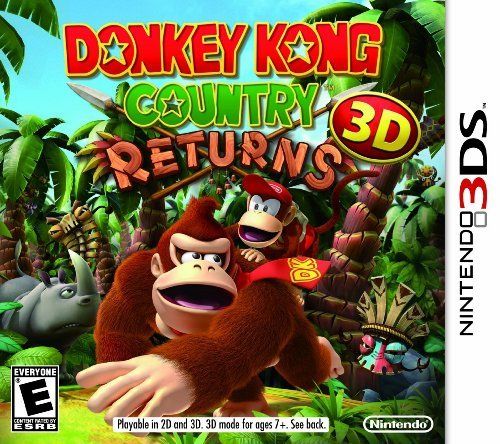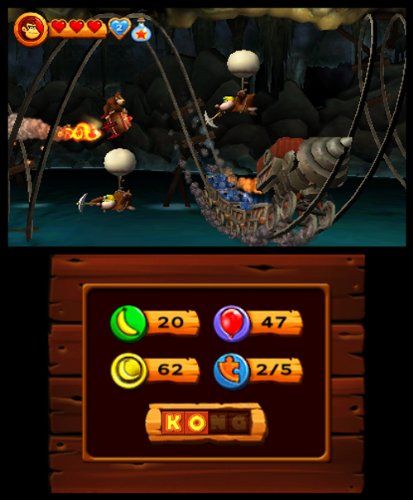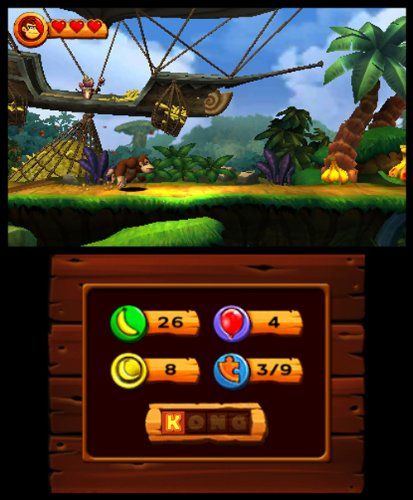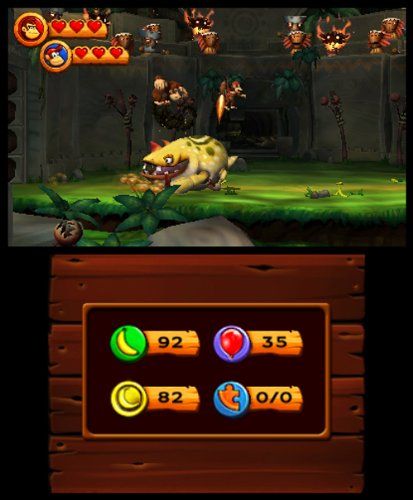Handheld gaming is more than a compromise of power and portability. Whether it’s the ability to play anywhere, multitask or hold an entire console in your hands, it’s a special experience consoles have never replicated. In a world where high resolutions and teraflops reign supreme, we take a look at a portable relic every month and reflect on what makes it memorable. Be warned, spoilers may occasionally populate these articles.
Despite being the titular character in the early arcade game it was much later in Donkey Kong's career when he finally attained stardom. He got his start in the industry in the role of a villain, throwing barrels to keep a mustachioed jumping man away from the distressed damsel in his captivity. It was a good gig, but everyone knows who the breakout star was there. It wasn't until the mid '90s when Rare and Nintendo teamed up to create a 2D platformer starting the ape with advanced 3D graphics. This resulted in three great Donkey Kong Country games in the 16-bit era, but soon after gaming trends shifted to entirely 3D formats. That is until 2010 when a traditional style Donkey Kong Country game returned in, ahem, Donkey Kong Country Returns, which was later ported to the 3DS where it takes advantage of the 3D graphics mode.
The Kong family was apparently successful in SNES era in vanquishing the Kremlings from their island. But when one nuisance leaves Donkey Island a new one arrives. After a volcanic eruption awakens the Tiki Tak Tribe, the Tikis play music that can hypnotize the animals on the island and make them steal Kong's banana hoard. On a tropical island one has to wonder why the Kong family needs such a stockpile of bananas and why Kremlings and Tikis need to steal them. One would think since they're plentiful enough to have that many ripe yellow bananas there's no need for hoarding or thievery and all the islanders can enjoy the bananas. The answer is because video games, and without the ridiculous banana stockpile being in jeopardy, the world would be deprived of Donkey Kong Country.
Donkey Kong Country Returns feels like a return to the original Donkey Kong Country, a sentiment that should be obvious based on the title. The player primarily controls Donkey Kong, but his diminutive sidekick Diddy Kong is along for the ride. Literally along for the ride as he rides on Donkey Kong's back, but he's not a completely useless freeloader. He's equipped with a jetpack, that can be activated to increase the length of Donkey Kong's jumps. As a sidebar, Diddy Kong and Donkey Kong appear to be different species, Donkey Kong appears to be a gorilla and Diddy Kong is some type of monkey as evidenced by his prehensile tail. Not sure how the Kong family tree works, but maybe Kong is a common surname and they're not related but friends?
But on topic, having Donkey Kong and Diddy Kong teaming up to get back all the bananas feels like their first adventure together back in 1994. The choices of protagonists isn't the only familiar element as the developers clearly wished to recreate the experience of the 16-bit classics with modern updates. Collecting bananas haphazardly strew about the levels along with the scattered KONG levels are straight from the original Donkey Kong Country games. Other familiar elements include levels on pirate ships, mine cart obstacle courses and barrel cannons as the two primates strive to reclaim their massive quantities of bananas.
There are nine worlds the Kongs need to conquer: the Golden Temple, the Volcano, the Factory, the Cliff, the Forest, the Cave, the Ruins, the Beach and the Jungle. Each world is filled with multiple stages and at the end a Tiki boss with some music-related pun for a name must be defeated. Despite Rare not being involved with the development of Donkey Kong Country Returns, Retro Studios did an exemplary job of recreating the magic of the original Donkey Kong Country games. From creating gorgeous environments to segments of launching primates out of barrels, everything feels like the natural progression from the 16-bit era, adding just enough modernization without ruining the magic of the classic formula.
During the age of PlayStation and Nintendo 64 2D gaming was going extinct. This wasn't surprising as the hardware was advancing creating more immersive worlds and striking visuals with the addition of the third dimension. Donkey Kong Country was even a precursor to this. Its gameplay was classic Mario-inspired 2D platforming, but one of its main selling points was its fully 3D rendered graphics. Donkey Kong Country Returns was a reminder that the changing gaming trends and advances in hardware doesn't mean 2D gaming has to die, but it can evolve. Donkey Kong Country Returns felt modern during its release but stayed true to its classic 2D platforming gameplay. It kept everything that made Donkey Kong Country a successful brand and only changed what needed to be changed in order to feel contemporary. The one addition to the handheld version that seemed like an unnecessary gimmick was the 3D mode. Nintendo is always trying to be innovative. Sometimes this works well for them. Sure, the Wii U wasn't their most successful console, but the next evolution of that idea was the Switch which we all know how that's doing. The 3D feature on the 3DS was interesting to play around with, but personal opinion is most games looked better with that feature turned off.
Kong Country Returns 3D is a 2013 port of a 2010 Wii game. The graphic quality did take a hit going to smaller screens, but they helped clear up the action by moving the inventory HUD to the lower screen. Its target audience is people who enjoyed the original Donkey Kong Country games, but it's a great game even without nostalgia goggles. When it was released it was a welcome return to classic Donkey Kong Country gameplay and among the personal favorite handheld platformers.
Get more Pocket Power. Click here to view every Pocket Power so far and prepare for a pocket-sized stroll down memory lane.

